
The global authority in superyachting
- NEWSLETTERS
- Yachts Home
- The Superyacht Directory
- Yacht Reports
- Brokerage News
- The largest yachts in the world
- The Register
- Yacht Advice
- Yacht Design
- 12m to 24m yachts
- Monaco Yacht Show
- Builder Directory
- Designer Directory
- Interior Design Directory
- Naval Architect Directory
- Yachts for sale home
- Motor yachts
- Sailing yachts
- Explorer yachts
- Classic yachts
- Sale Broker Directory
- Charter Home
- Yachts for Charter
- Charter Destinations
- Charter Broker Directory
- Destinations Home
- Mediterranean
- South Pacific
- Rest of the World
- Boat Life Home
- Owners' Experiences
- Conservation and Philanthropy
- Interiors Suppliers
- Owners' Club
- Captains' Club
- BOAT Showcase
- Boat Presents
- Events Home
- World Superyacht Awards
- Superyacht Design Festival
- Design and Innovation Awards
- Young Designer of the Year Award
- Artistry and Craft Awards
- Explorer Yachts Summit
- Ocean Talks
- The Ocean Awards
- BOAT Connect
- Between the bays
- Golf Invitational
- BOATPro Home
- Superyacht Insight
- Global Order Book
- Premium Content
- Product Features
- Testimonials
- Pricing Plan
- Tenders & Equipment

Large Yacht Code 3 reassures owners & builders
The three simple characters LY3 seem mundane, but some might say that in at least one respect they have saved the superyacht industry from a near-death experience.
Short for Large Yacht Code 3, LY3 is successor to the current Large Yacht 2 code (LY2), developed by the UKs Maritime and Coastguard Agency (MCA) for Red Ensign-flagged vessels.
At the time of writing this article, LY3 was still in draft, and was set to not only will replace LY2, but it also builds upon the previous proposed LY2 Edition 3, which was released in 2011.
The Large Yacht Code applies to charter yachts 24m and longer and less than 3,000GT, carrying no more than 12 passengers.
LY3 goes a long way toward blowing away some of the doubt that was beginning to cloud yacht-building schedules due to the upcoming requirements of the Maritime Labour Convention 2006 (MLC 2006).
More mundanely, this latest code also addresses private submarine issues, the expanding girth of persons aboard yachts, fire hazards of laundries and galleys, elevators and mandatory radio watches.
MLC Equivalencies
The spectre of the International Labour Organizations MLC 2006 may have many people wondering if new yachts under 150ft could even be built.
Written to protect commercial seafarers rights, MLC 2006 stipulates crew accommodation sizes that would be difficult to fit within the confines of a yacht. Studies show that yacht guests would lose approximately 40 per cent of their space to crew.
And because MLC 2006 does not specifically exclude superyachts, at the time of writing, they are included and both flag and port states will enforce the regulations internationally. MLC 2006 comes into effect 12 months after 30 member nations sign; with the critical mass reached in August 2012, it is scheduled to come into force in August 2013.
For yacht owners and builders, LY3 brings some really good news, offering some certainty as to what might be permissible for yachts under these upcoming regulations. Recognizing that practicable sleeping accommodations may not easily meet MLC 2006s requirements, LY3 uses the term equivalent focusing on the intent as opposed to the strict letter of the law.
LY3 vs MLC 2006
The 169-page LY3 draft devotes more than 10 pages to the MLC 2006, adding two new sections, 21A and 21B, to implement substantially equivalent arrangements to the crew accommodation requirements of MLC.
For example, for vessels less than 3,000GT, MLC 2006 strictly prescribes a very exact 4.5 square meters (48 square feet) or more of free floor area for a single-occupancy cabin, not less than seven square meters (75 square feet) if occupied by two seafarers.
LY3 tries to take into account the unique shape and structure of a smaller yachts hull. To provide room in a cabin for sufficient movement on yachts under 1,250GT, LY3 allows reduced floor areas on a sliding scale between 3.6 and 4.5 square meters (39 and 48 square feet) for a single cabin and 6.2 and 7 square meters (66 and 75 square feet) for a double cabin.
Thus, if the cabin shape and bunk placement allows free movement of a seafarers upper body, a reduced free floor area may be provided with the Administrations agreement, but should not be less than one square meter per seafarer.
Its a bit surprising that [the galley] has not been addressed before, observes Mark Towl, policy manager for large yachts at the MCA. Particularly since, as Franc Jansen, director and head of YPI Management, points out, Some of the most damaging fires lately in yachts have been starting in the galley and laundry.
The draft LY3 recognizes that a yachts galley can be a hazard to all on board because of the combustible nature of grease in the atmosphere as it collects in exhaust ducting, much like soot in a chimney.
To keep any combustion that might start in the galley within the galley for as long as possible, galleys in yachts laid down on or after 1 January 2015 are to be enclosed by B-15 Class fire boundaries a technical standard for fire resistance.
LY3 will recommend vessels constructed prior to 2015 also comply. LY2 addressed this by simply trying to prevent the fire from spreading, requiring a damper to shut off the gas flow at the lower end of the duct and then inside the ducting itself. In larger yachts a grease trap is required.
Containing a galley fire in the galley doesnt do much to save whatever or whoever happens to be inside the galley. That includes cables and wiring, meaning that even a well-contained galley fire could still affect other spaces in the yacht.
LY3 directs that cables and wiring serving essential or emergency power, lighting, internal communications or signals be diverted around the galley, as well as laundry, machinery spaces and fuel storage.
In addition, ventilation ducts for accommodations, galleys, service spaces or control stations are not to pass through machinery spaces or areas containing fuelled vehicles or fuel storage spaces, unless the ducts are steel.
Getting stuck in a dark, broken elevator is unpleasant for anyone, but even more so in a seaway. Elevator doors that open suddenly to a cavernous open shaft rather than a panelled elevator do nothing to improve a guests experience.
In addition to specifying that elevators shall be designed, constructed, installed and tested by a competent person, LY3 specifies that an elevators construction and installation for marine use needs a certificate, including a load test from a classification society, an insurer, or the manufacturer.
Section 16 of LY3 is devoted to a yachts radio and applies to all vessels. It requires a yacht during its intended voyage be able to transmit ship-to-shore distress alerts by at least two separate and independent means, each using a different radio communication service, and receive shore-to-ship distress alerts.
In addition, a yacht must be able to transmit and receive ship-to-ship distress alerts, search-and-rescue coordinating communications, on-scene communications, signals for locating by radar, maritime safety information, and bridge-to-bridge communications.
LY3 also directs what main and backup power is required and sets radio watch standards mandating a continuous watch at sea.
Submersibles
Submarines are undeniable fun, but theyre inherently dangerous. Operating a submarine is not like riding a personal watercraft. Even launching one from a stabilized yacht can be tricky.
Because a submarine compresses as she sinks, losing buoyancy continuously if ballast is not reduced, the boat will want to sink faster and faster until she crushes or comes to rest on the bottom where someone can come to the rescue.
Some pleasure submarines advertise their ability to survive for several days on the bottom, but seem to miss the point that at their maximum depth they are beyond divers reach, hence giving the hapless occupants those same several days to contemplate their demise.
LY3 states that submersible craft carried on yachts should comply with International Maritime Organizations Maritime Safety Committee Circular 981 as well as respective national regulations, including:
Being constructed and maintained in accordance with the rules of a recognized classification society and suitable for the intended use;
A safety management system separate from other systems operated by the parent vessel, including an operations manual;
Certification for the safety of submersible craft and its support equipment following a satisfactory survey and audit.
LY3 stipulates that both operators and the operation of personal watercraft should comply with the applicable legislation of the state in whose waters they are being operated, and that crew operating submarines have, adequate theoretical and practical training for the type of submersible craft on board, and have demonstrated ability to operate it.
Polar operations
As yachts boldly go where a gin and tonic has never been spilled, LY3 has a new provision for yachts which intend to operate within polar regions.
Stipulating what would seem to be the obvious, these vessels must be classed accordingly with structural strength and systems incorporating heating and recirculation facilities [to] meet ice-class standards and considerations should include those for icing.
Heavy-displacement guests
Perhaps taking into account the culinary wonders typical of a super-yacht galley, among LY3s minor changes are requirements for additional special life jackets for large girth persons.
Implementation
LY3 will continue to be developed jointly by the UK, including its relevant overseas territories and crown dependencies, and international industry representatives.
In fact, Mark Towl is quick to point out that LY3 truly will be a team effort of the Large Yacht Steering Committee and Large Yacht Working Group, comprising industry stakeholders, including builders, designers, managers, seafarers, classification societies and other Red Ensign group administrations.
LY3 comes into effect once it has been cleared by the UKs statutory processes for implementing new legislation meaning the code has to go through a number of internal checks and balances to ensure that there is no additional burden on the industry.
Then it has to go through the statutory 12-week public consultation period before it can be published.
Originally published: Showboats International, February 2012.
Sign up to BOAT Briefing email
Latest news, brokerage headlines and yacht exclusives, every weekday
By signing up for BOAT newsletters, you agree to our Terms of Use and our Privacy Policy .
More stories
Most popular, from our partners, sponsored listings.
Large Yacht Codes of Practice and Standards
Red ensign group large yacht code.
Collaboration between members of the Red Ensign Group (REG), which includes the UK and the industry as a whole, has led to the creation of a new yacht code.
The REG Yacht Code, which was launched on 13 November 2017 at the Global Superyacht Forum in Amsterdam, has considered all the expertise gained across almost two decades of regulating the large yacht sector since the Code of Practice for the Safety of Large Commercial Sailing and Motor Vessels, or LY1, was published by us in 1997.
In its new format, the REG Yacht Code is made up of two parts with common annexes - such as for over-side working systems, sailing vessels and helicopter landing areas. It keeps the familiar format of the existing REG codes while being more dynamic to industry change and development.
The REG Yacht Code combines the existing Large Yacht Code 3 and the Passenger Yacht Code into a single document and came into force on 1 January 2019.
The REG Yacht Code is in two parts with common annexes .
- Part A relates to the Large Yacht Code
- Part B relates to the Passenger Yacht Code
Large Commercial Yacht Code (3) or “LY3”
LY3 was launched at the 2012 Monaco Yacht Show and came into effect on 20 August 2013. It introduced equivalent requirements for large yachts to the requirements of the Maritime Labour Convention (MLC).
It also included updates for the requirements for masts and rigging for sailing yachts and the latest technology in radio communication equipment.
LY3 has been replaced by the Red Ensign Group yacht code which came into effect on 1 January 2019.
Large Commercial Yacht Code (2) or “LY2”
LY2 came into effect on 24th September 2004. Chartering is a commercial use of a vessel, and therefore all yachts engaged in chartering activities must comply with the Code. A significant change in LY2 was the introduction of the Short-Range Yacht. LY2 was replaced by LY3 in 2013.
The Passenger Yacht Code
This Code has now been replaced by the Red Ensign Group Yacht Code Part B .
The Passenger Yacht Code (PYC) was applicable to pleasure yachts:
- Of any size
- In private or commercial use
- Carrying 13 to 36 passengers
- Not carrying cargo
It represents an International Maritime Organization (IMO) accepted equivalence to the requirements of international conventions including SOLAS up to 36 passengers.
The purpose of the 13 to 36 Passenger Yacht Code (PYC) was to provide design criteria, construction standards and other safety measures for yachts carrying 13 to 36 passengers to minimise the risk to such ships, to the personnel on board and to the environment. The criteria were largely based on the Conventions and Instruments referred to in the Code.
- Large Yacht (Part 1)
- New Registration
- Change Details
- Change of Ownership
- Provisional Registration
- Codes of Practice and Standards
- Large Yacht Guidance
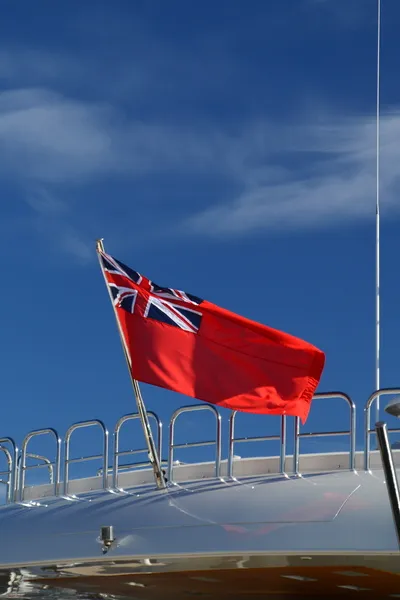
Red Ensign Group Publications
See Red Ensign Group publications and guidance on the REG website.
Cookies on GOV.UK
We use some essential cookies to make this website work.
We’d like to set additional cookies to understand how you use GOV.UK, remember your settings and improve government services.
We also use cookies set by other sites to help us deliver content from their services.
You have accepted additional cookies. You can change your cookie settings at any time.
You have rejected additional cookies. You can change your cookie settings at any time.
MSN 1851 (M) Large commercial yacht code (LY3)
Provides an update to the 2nd edition of the large commercial yacht code (LY2),as of 20 August 2013.
The Large Commercial Yacht Code (LY3)
PDF , 68.4 KB , 2 pages
This file may not be suitable for users of assistive technology.
This notice is for all classification societies and:
of large commercial yachts.
Updates to this page
Sign up for emails or print this page, related content, is this page useful.
- Yes this page is useful
- No this page is not useful
Help us improve GOV.UK
Don’t include personal or financial information like your National Insurance number or credit card details.
To help us improve GOV.UK, we’d like to know more about your visit today. Please fill in this survey (opens in a new tab) .

- Loss Prevention
- Maritime Health

Britannia: Tips on the use of social media onboard

DSG launches maritime mentoring program
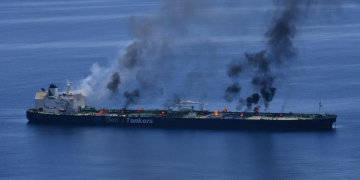
Sounion gets successfully towed to safe location with no oil spill
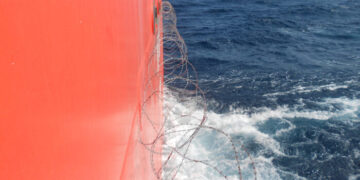
ReCAAP ISC: Three incidents of armed robbery 10 – 16 September
- Intellectual

Book Review: ECDIS passage planning and watchkeeping

Mindful Living: Daily tips for being in the present moment

Mindful Walking: Become aware, savor the sensations
- Green Shipping
- Ship Recycling

ECSA: Shipping must be central to the EU Clean Industrial Deal

HVO biofuel to be used for towing in British Columbia port
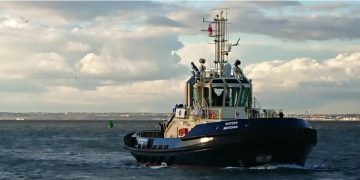
Svitzer orders world’s first battery-methanol powered tugboat
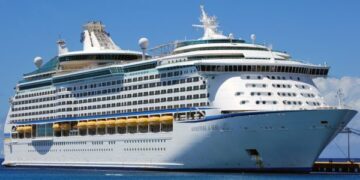
New Lifecycle Agreement to oversee the efficiency of 37 cruise ships
- Connectivity
- Cyber Security
- E-navigation
- Energy Efficiency
- Maritime Software

Christopher J. Wiernicki: AI is going to reshape everything in maritime

New deal aims to enhance situational awareness and automation
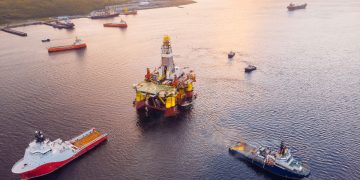
White paper highlights urgent need for data standardisation in offshore sector

OrbitMI aims to simplify noon and sensor reporting
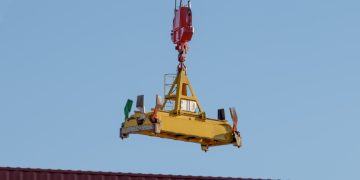
Compliance with Ships’ Lifting Appliances: A best practice guide
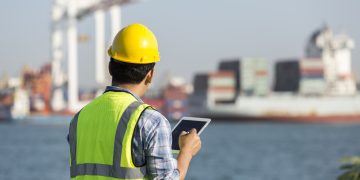
SIRE 2.0 inspection program goes live
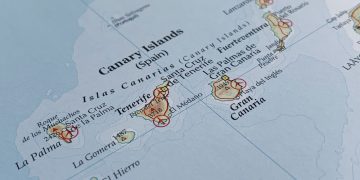
Intoxicated captain gets fined in the Canary Islands
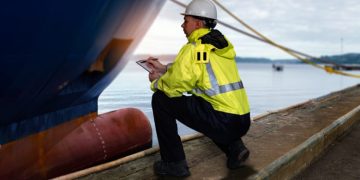
Riyadh MOU launches CIC on ship lifting appliances and loose gear
- Diversity in shipping
- Maritime Knowledge
- Sustainability


IUMI: Understanding the rise in ocean hull premiums
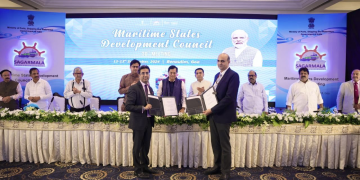
India establishes Maritime Dispute Resolution Centre

IUMI presents the latest marine insurance market trends

IUMI: Geopolitical tensions reshape marine insurance

High-quality case management for ill crew: A West Nile virus case study

Wellness Corner: Capt Kuba Szymanski, InterManager

MMMCZCS: Biofuels is as an attractive ‘go-to’ business compliance option
Trending tags.
- Book Review
- Career Paths
- Human Performance
- Industry Voices
- Maritime History
- Regulatory Update
- Seafarers Stories
- Training & Development
- Wellness Corner
- Wellness Tips

LY3 ‘Large Commercial Yacht Code’ entry into force
Lr statutory alert no. 25/2013.
LY3 applies to yachts which are 24 metres and over in load line length, are in commercial use for sport or pleasure, do not carry cargo and do not carry more than 12 passengers. For the most part, the Code applies to new yachts constructed (having their keels laid) on or after 20 August, 2013.
However, there are some retrospective requirements for existing yachts surveyed against the previous versions of the Code – LY1 and LY2. These yachts must now comply with the LY3 requirements for: lifejackets, radio equipment, long-range identification andtracking (LRIT), bridge navigational watch alarm systems (BNWAS), and some operational aspects such as manning, personnel certification and crew agreements.
Related News
Understanding investment in ai for the shipping industry, fuel cell and ccs study aims to cut maritime emissions.
These retrospective requirements are detailed in section 3.3.3.4 of the Code, which can be downloaded in full here . Under theconditions of LY3, they should be complied with by 20 August, 2013 or, failing that, within a time scale agreed with the vessel’s flag administration. For all other items, existing yachts will continue to be surveyed against the LY1 or LY2 requirements.
Source: Lloyds Register

Wärtsilä delivers dual-fuel engines to environmentally sound ferry
Eu proposal for regulation on shipping emissions.

LR: The critical role that fuel quality plays in the maritime industry
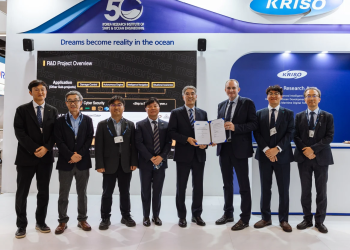
New collaboration aims to enhance marine autonomy
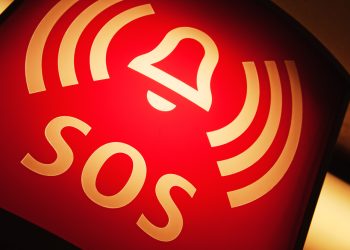
LR report highlights need for minimizing alarm flooding

LR: Assessing biofuel as a clean marine fuel

LR acquires OTG to expand its services
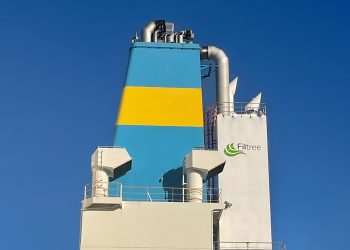
EPS tanker receives AiP for onboard carbon capture system
Leave a reply cancel reply.
Your email address will not be published. Required fields are marked *
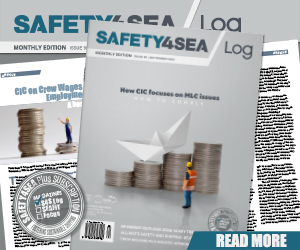
Explore more

- SAFETY4SEA Events
- SAFETY4SEA Plus Subscription
Useful Links
- Editorial Policies
- Advertising
- Content Marketing
© 2021 SAFETY4SEA
- PSC Case Studies
- Tip of the day
- Training & Development
| Clasification Society Rulefinder 2020 - Version 9.33 - Fix | |
| Technical Standard for Helicopter Landing Areas | |

LY3 superyacht code adapted in Australia by AMSA
Where can we take you, enquire now.
Thank you for contacting Ocean Alliance. We will reply to your enquiry as soon as possible.

- South Pacific
- East Mediterranean
- West Mediterranean
- Bahamas & Caribbean
- South East Asia
- North America
- Indian Ocean
- Central & South America
- Northern Europe
- Yacht Marketing
- Yacht Charter Management
- Yacht Commercial Structures
- Yacht Operational Support
- Yacht Fiscal Support
- Meet The Team
- Yachting for purpose
27 May 2016

AMSA adopts the Large Yacht Code for superyachts
3 August 2016 – By Laurie Foulon
In March 2016, the Australian Maritime Safety Authority (AMSA) adopted the Large Yacht Code for superyachts and training vessels of 24 metres or more in length in a first for the Australian yachting community.
Marine Order 52 will change the way large yachts in Australia are regulated in line with international norms. AMSA Chief Executive Mick Kinley said the change recognises that large yachts, also referred to as Super Yachts, operated commercially for sport or leisure do not fall naturally into a single class.
“Australia shares the view of the United Kingdom Maritime and Coastguard Agency (UK MCA) that prescribed merchant ship safety standards may be incompatible with the safety needs of large yachts given the nature of their operations,” Mr Kinley said. “The introduction of Marine Order 52 will provide an equivalent standard through the adoption of the UK MCA’s Large Commercial Yacht Code 3rd Edition, known as the LY3 Code.”
The changes focus on the survey and certification requirements of large yachts engaged in commercial operations and how they will be regulated under the Australian Navigation Act 2012. Large yachts regulated under Marine Order 52, will be defined as motor or sailing vessels of more than 24 metres in load line length, of 150 gross tonnes or more, in commercial use for sport or pleasure and not carrying more than 12 passengers. “Large yachts will still have to comply with all other international conventions that apply to a vessel of its size and operations,” Mr Kinley said. AMSA will work with owners of vessels constructed prior to the new marine order to ensure they comply with the code as far as practical. “Where compliance is not practical because of the structure or arrangement of the vessel, AMSA will consider the use of equivalent solutions as allowed under marine orders and the LY3 Code,” Mr Kinley said.
The introduction of the LY3 Code follows the introduction of crew qualifications for SuperYacht master and deck officers on January 1, 2016. The new qualifications introduced a deck certificate or competency structure similar to that of the UK MCA certificate structure for Master, Chief Mate and Deck Watchkeeper qualifications for various tonnage yachts.
“AMSA identified the need for changes to accommodate seafarers and vessels in the Super Yacht community and has responded with the introduction of the new marine order, in consultation with industry and stakeholders,” Mr Kinley said.
You can contact us on [email protected] to find out more.
Follow Ocean Alliance on Instagram for daily news and updates (@ocean_alliance).
CONTACT OCEAN ALLIANCE FOR YOUR SUPERYACHT EXPERIENCE Enquire today to set sail tomorrow
Experience ocean alliance.
Postcards from Gulag
Photographs from the remnants of the gulag archipelago, watchtower, perm-36, perm krai.
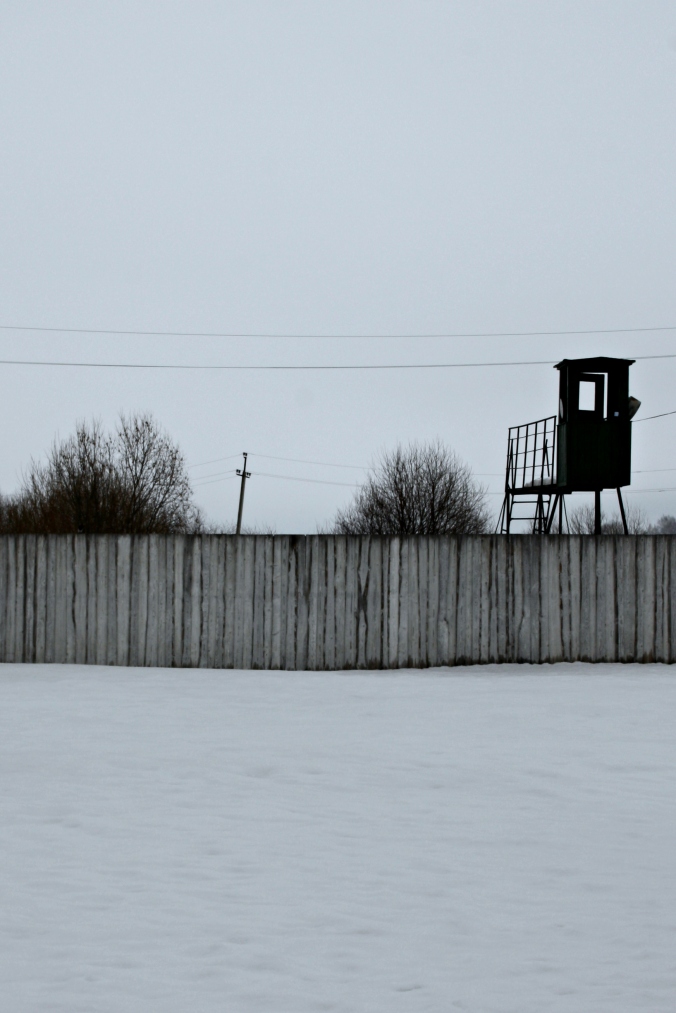
Perm-36 is allegedly the only Gulag camp that has been turned into a museum. While this is not strictly true (there are other former camps that have been partly preserved) and Perm-36 is heavily reconstructed, the museum has conserved an important part of the Soviet camp system, especially from its latter era after the death of Stalin. Perm-36 camp operated from the 1940s until the last days of the Soviet Union, and it was meant mainly for the political prisoners and dissidents. Among the dense forests of Russia near the Ural mountains stands a solitary watchtower of the former camp. Behind it, inside the zona , one finds relics of the barracks, but somehow the tower itself, a symbol as poignant as barbed wire, communicates the utter isolation of Gulag victims.
Share this:
Leave a comment cancel reply.

- Already have a WordPress.com account? Log in now.
- Subscribe Subscribed
- Copy shortlink
- Report this content
- View post in Reader
- Manage subscriptions
- Collapse this bar

By SuperyachtNews 12 Jul 2017
A closer look at the REG Code
Will the red ensign group code enable more flexibility within yacht design.
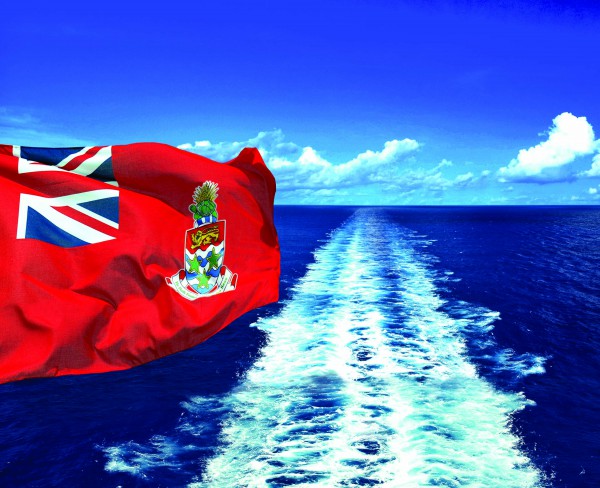
With the recently announced Red Ensign Group (REG) Code, to which the Cayman Islands Shipping Registry is taking the lead in the secretariat role, the group hopes to address certain frustrations associated with superyacht construction within a new regulatory framework for yachts. The new code will consolidate an updated version of the Large Yacht Code (LY3) and the latest version of the Passenger Yacht Code (PYC) and aim to make the code more usable.
This all-encompassing concept will not be a first for yacht coding – the Marshall Islands Shipping Registry’s RMI Code has one document that covers both large yachts and passenger yachts. However, the REG wants to differentiate the new code by including greater flexibility for naval architects, designers and yards. While the REG is developing the new code to match international conventions – and they expect to update the Load Line, SOLAS and STCW requirements to keep up with the steady trickle of updates from the International Maritime Organization (IMO) – the focus is also on giving opportunities to yards and designers to explore unique and innovative ideas that owners want.
“Although the codes will remain mostly the same, we want to ensure that within the prescriptive framework, we have alternative design and arrangement clauses,” says Jo Assael, Cayman’s senior surveyor and yacht codes specialist. “This will enable designers to go a little more off-piste and allow them, through rigorous design and engineering principles, to prove that an alternative standard is just as safe as the prescriptive one. Hopefully, this is going to open the doors to these unique designs that haven’t been allowed by the code in the past.” The REG is expecting publication of the new code in September 2017, which would lead to an application date for vessels with keels laid after 1 January, 2019.
“We are trying to make the codes as easy to understand and use as possible, but we do always have to remember that the underlying regulations or conventions come from the IMO and are designed for the international shipping community, which is inherently more experienced and more professional in their applications of the regulations,” adds Assael. “Designing and building a superyacht isn’t a simple thing and the Large Yacht Code and Passenger Yacht Code are very technical documents – we can’t dumb them down too much because they have to achieve a certain standard that is acceptable to the wider shipping community when we notify the IMO of the codes.”
With the new code, the Red Ensign Group also wants to look at industry best practice: certain construction equivalents have become such standard industry practice over the years and it is intended that these are written into the code. “We want to streamline that and make sure we are regulating how people are building boats today, as opposed to how they were building boats when we first wrote the Large Yacht Code in 1997,” explains Assael.
Examples of such standard practice tend to be on the engineering side of the vessel; for instance, ventilator exhaust and air pipes are required to have weathertight, closure, but on yachts they are generally all hidden in the bulwark or in the headlining. They are in protected locations so either there isn’t ready access to them or their protection from the weather is already afforded in the design, meaning the requirement for weathertight closure is not necessary.
“It is these ‘behind-the-scenes’ tweaks that never actually affect the owner’s enjoyment of a vessel or the aesthetics but define the way that we build the vessels and the way that they are operated today,” advises Assael. “We are trying to get them written into the code so builders can take advantage of them, and reduce the burden on build time and cost when it is something that we are happy for them to do from the start, as long as they follow X, Y and Z.”
To date, the REG has been hosting a number of working groups through which it hopes to ascertain what the industry itself hopes to see change. Various working groups have been created, spanning LY3, PYC, helicopter-landing areas and passenger limits. It is hoped that one of the key factors addressed will be allowing innovation while ensuring safe construction.
Profile links
Cayman Islands Shipping Registry
Join the discussion
To post comments please Sign in or Register
When commenting please follow our house rules
Click here to become part of The Superyacht Group community, and join us in our mission to make this industry accessible to all, and prosperous for the long-term. We are offering access to the superyacht industry’s most comprehensive and longstanding archive of business-critical information, as well as a comprehensive, real-time superyacht fleet database, for just £10 per month, because we are One Industry with One Mission. Sign up here .
Sign up to the SuperyachtNews Bulletin
Receive unrivalled market intelligence, weekly headlines and the most relevant and insightful journalism directly to your inbox.
Sign up to the SuperyachtNews Bulletin
The superyachtnews app.

Follow us on
Media Pack Request
Please select exactly what you would like to receive from us by ticking the boxes below:
SuperyachtNews.com
Register to comment

IMAGES
VIDEO
COMMENTS
Includes: the large yacht code (LY3) the yacht master's guide to the UK flag. the division of responsibilities. merchant shipping notice (MSN) 1851 announcing the replacement of LY2 with LY3.
Details. A previous version of the code of practice for the safety of large commercial yachts under 3000 gross tonnage. This code has been replace by the Red Ensign Group yacht code. LY3 was for ...
The Large Yacht Code applies to charter yachts 24m and longer and less than 3,000GT, carrying no more than 12 passengers. LY3 goes a long way toward blowing away some of the doubt that was beginning to cloud yacht-building schedules due to the upcoming requirements of the Maritime Labour Convention 2006 (MLC 2006).
LY3 The Large Commercial Yacht Code Applicable to yachts which are 24 metres and over in load line length, ... Vessels in commercial use for sport or pleasure, such as Large Yachts, do not fall naturally into a single class and, in any case, prescribed merchant ship safety
LY3 - The Large Commercial Yacht Code. 1 Foreword. 2 Definitions. 3 Application and Interpretation. 4 Construction and Strength. 5 Weathertight Integrity. 6 Water Freeing Arrangements. 7A Machinery - Vessels of Less than 500GT. 7B Machinery - Vessels of 500GT and Over.
LY3 The Maritime and Coastguard Agency (MCA) launched the new Large Yacht Code (LY3) at the 2012 Monaco Yacht Show. LY3 has been developed by an industry working group in order to keep up with developments in the industry and amendments which have subsequently taken place with the international conventions for which the codes provide an
Large Commercial Yacht Code (2) or "LY2". LY2 came into effect on 24th September 2004. Chartering is a commercial use of a vessel, and therefore all yachts engaged in chartering activities must comply with the Code. A significant change in LY2 was the introduction of the Short-Range Yacht. LY2 was replaced by LY3 in 2013.
The Large Commercial Yacht Code (LY3) PDF, 68.4 KB, 2 pages. This file may not be suitable for users of assistive technology. Request an accessible format. If you use assistive technology (such as ...
Following the British government's final approval of the Large Yacht Code 3 (LY3) on 15 August, and its coming into effect on 20 August, the Maritime and Coastguard Agency has issued a Merchant Shipping Notice - MSN1851 - which, in addition to confirming the code as statute law, states that renewed safety requirements that will be applicable to existing vessels (detailed in section 3.
3 Application and Interpretation. 3. Application and Interpretation. 3.1 Application. 3.2 Area of Operation. 3.3 Equivalent Standards, Exemptions and Existing Vessels. 3.4 Interpretation. 3.5 Updating the Code. Parent topic: LY3 - The Large Commercial Yacht Code.
The third edition of the Large Commercial Yacht Code (LY3) entered into force on 20 August, 2013, when the ILO Maritime Labour Convention (MLC, 2006) was introduced. LY3 applies to yachts which are 24 metres and over in load line length, are in commercial use for sport or pleasure, do not carry cargo and do not carry more than 12 passengers ...
The Large Commercial Yacht Code (LY3) Notice to all designers, builders, owners, operators, employers, crews, masters of large commercial yachts and Classification Societies. This notice replaces MGN 456(M), MGN 1792(M) and MSN 1792(M) - Amendment 1 Summary This Merchant Shipping Notice announces the replacement of LY2 by the latest revision of
Hail to LY3. In anticipation of the new rules--and to help designers and builders prepare new designs in accordance with these rules--the MCA has made its new LY3 Large Commercial Yacht Code public. MCA representatives attended the Monaco Yacht Show in September and made themselves available for questions and clarifications. Cecile Gauert.
Even clients experienced with the LY3 standard can be surprised by the intricacies of PYC, particularly when it comes to price. There are several code compliance differences between LY3 (for yachts with a maximum of 12 guests) and PYC (for yachts with 12 to 36 guests), all focused on safety while accommodating additional guests and crew.
Statutory Documents - MCA Publications - LY3 - The Large Commercial Yacht Code - Annex 6 Technical Standard for Helicopter Landing Areas Annex 6 Technical Standard for Helicopter Landing Areas Section 1 - Introduction; Section 2 - General Considerations; Section 3 - Helicopter Landing Areas - Physical Characteristics ...
The Maritime and Coastguard Agency (MCA) has published the third edition of its Large Yacht Code, the LY3. Its publication follows the ratification of the Maritime Labour Convention (MLC), with both documents coming into force on 20 August 2013.
Under LY3, the MSMD for the same yacht requires a minimum of eight crew, of which there are five for navigation, two engineers and one crew cook. Bearing in mind that the typical on-duty crew number for a 92m motoryacht is between 30 and 36, the minimum safe manning for the PYC registration takes up a significant percentage of the overall crew ...
"The introduction of Marine Order 52 will provide an equivalent standard through the adoption of the UK MCA's Large Commercial Yacht Code 3rd Edition, known as the LY3 Code." The changes focus on the survey and certification requirements of large yachts engaged in commercial operations and how they will be regulated under the Australian ...
Perm-36 is allegedly the only Gulag camp that has been turned into a museum. While this is not strictly true (there are other former camps that have been partly preserved) and Perm-36 is heavily reconstructed, the museum has conserved an important part of the Soviet camp system, especially from its latter era after the death of Stalin.
Answered: Starting from November 14, some departures of the trains #83/#84 (Северный Урал) and #11/#12 (Ямал) will skip all stops from Perm-2 to Chusovskaya. These trains offer the best times to arrive in Perm from Nizhny Novgorod. May I ask what are the...
The new code will consolidate an updated version of the Large Yacht Code (LY3) and the latest version of the Passenger Yacht Code (PYC) and aim to make the code more usable. This all-encompassing concept will not be a first for yacht coding - the Marshall Islands Shipping Registry's RMI Code has one document that covers both large yachts ...
57616101001. Website. dobryanka-city.ru. Dobryanka (Russian: Добря́нка) is a town in Perm Krai, Russia, located on the bank of the Kama Reservoir, 61 kilometers (38 mi) north of Perm, the administrative center of the krai. Population: 33,686 (2010 Russian census); [2] 36,436 (2002 Census); [6] 35,317 (1989 Soviet census).